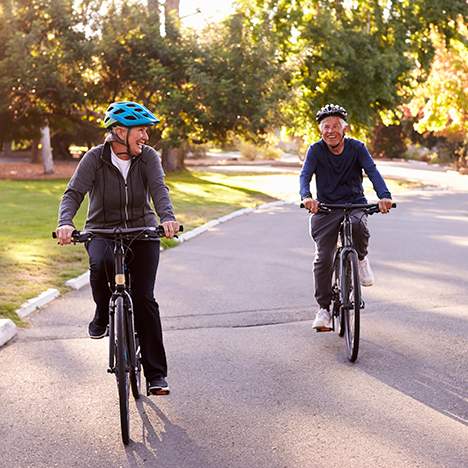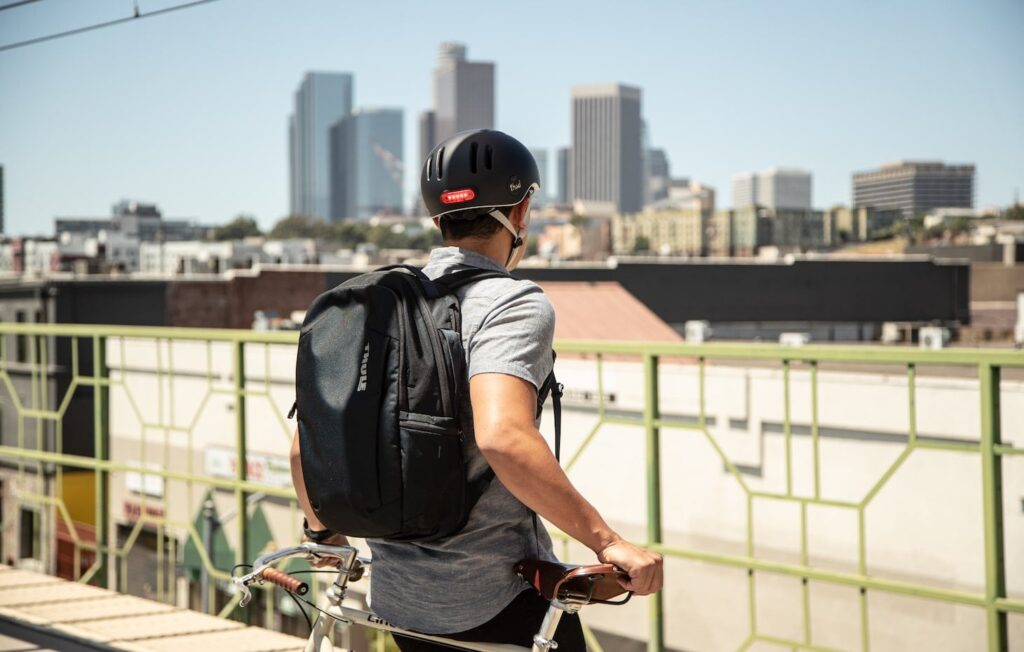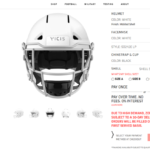In California, bicycle helmets are required for riders under 18 years old. Adults are not legally required to wear helmets.
Bicycle safety is crucial, especially in bustling areas like California. The state enforces specific laws to protect young cyclists. Riders under 18 must wear helmets to prevent serious injuries. Although adults are not legally mandated to wear helmets, doing so is strongly recommended.
Helmets can significantly reduce the risk of head injuries in accidents. Many cycling organizations advocate for helmet use regardless of age. Understanding the local laws and prioritizing safety can make cycling a safer activity for everyone. Always consider wearing a helmet to protect yourself and set a good example for younger riders.
Helmet Laws In California
Understanding the helmet laws in California is essential for all cyclists. These laws ensure safety and help reduce injuries. Let’s dive into the specifics of these laws.
Current Legislation
California law mandates that all cyclists under 18 wear a helmet. This rule applies to riders of bicycles, scooters, skateboards, and inline skates. The helmet must meet specific safety standards. Helmets should fit snugly and be fastened securely.
Age Requirements
| Age Group | Helmet Requirement |
|---|---|
| Under 18 | Mandatory |
| 18 and Over | Optional |
For cyclists aged 18 and over, wearing a helmet is not required by law. However, it is highly recommended for safety. Many accidents involve adults who do not wear helmets.
Parents are responsible for ensuring their children wear helmets. Fines can be issued if a child is caught riding without a helmet. Safety should always come first, regardless of age.
Helmets can prevent serious head injuries. They can save lives. Make sure your helmet meets the safety standards set by the Consumer Product Safety Commission (CPSC).
For more detailed information, refer to the California Vehicle Code Section 21212. Stay safe and ride responsibly.

Credit: westcoasttriallawyers.com
Penalties For Non-compliance
In California, wearing a bicycle helmet is essential for safety. But, what happens if you don’t comply? Understanding the penalties can help you avoid unnecessary trouble.
Fines And Fees
If you are caught without a helmet, you will face penalties. The first offense usually results in a fine. This fine can be up to $25. Repeat offenses can lead to higher fines. Always wearing a helmet can save you money.
Here is a breakdown of potential fines:
| Offense | Fine Amount |
|---|---|
| First Offense | Up to $25 |
| Second Offense | Higher fines |
Impact On Insurance
Not wearing a helmet can affect your insurance. If you get into an accident, your insurance may not cover all expenses. Insurance companies look at helmet use when determining fault.
Here are some potential impacts on insurance:
- Higher premiums
- Reduced coverage
- Increased liability
Always wearing a helmet can keep your insurance costs low. It also ensures better protection during accidents. Safety should always be a priority.
Safety Benefits Of Wearing A Helmet
Wearing a bicycle helmet can save your life. It protects your head during accidents. Helmets are designed to absorb impact and reduce injuries. They also provide peace of mind while riding.
Protection In Accidents
Bicycle accidents can cause serious head injuries. Helmets provide a protective shield for your skull. They reduce the risk of brain injuries by up to 85%. Here are some key benefits:
- Absorbs shock: Helmets cushion the impact.
- Prevents skull fractures: They protect your skull from breaking.
- Minimizes cuts and bruises: They keep your head safe from minor injuries.
Long-term Health Benefits
Wearing a helmet promotes long-term health. It prevents brain damage that can affect your future.
Here are some ways helmets contribute to better health:
- Prevents traumatic brain injuries: Protects your cognitive functions.
- Reduces medical costs: Avoids expensive treatments.
- Improves quality of life: Keeps you healthy and active.
Use a helmet every time you ride your bike. It’s a simple way to protect yourself and ensure a healthy future.

Credit: explorethousand.com
Exceptions To The Helmet Law
While California has strict bicycle helmet laws, there are specific exceptions. These exceptions allow certain people to ride without a helmet. Understanding these exceptions is important for all cyclists.
Specific Situations
There are certain situations where wearing a helmet is not required.
- Private Property: If you ride on private property, you don’t need a helmet.
- Parades and Special Events: Helmets are often not required during parades or special events. Check event rules for details.
- Professional Cyclists: Some professional cyclists are exempt during races or training.
Exempted Groups
Some groups are specifically exempt from wearing helmets.
| Group | Reason |
|---|---|
| Adults Over 18 | They are not legally required to wear helmets. |
| Religious Beliefs | Some exemptions are based on religious practices. |
It’s crucial to know if you fall into one of these groups. This knowledge helps you understand your rights and responsibilities as a cyclist.
Helmet Standards And Certification
Wearing a bicycle helmet in California is crucial for safety. But not all helmets meet the required standards. This section will cover the helmet standards and certification you should know about. Knowing these standards ensures your helmet offers the best protection.
Approved Helmets
In California, not every helmet is approved. Your helmet must meet certain standards. The most recognized standards are set by CPSC, ASTM, and Snell. These bodies test helmets for impact resistance and durability. Make sure your helmet has a sticker from one of these organizations.
| Organization | Standard |
|---|---|
| CPSC | Consumer Product Safety Commission |
| ASTM | American Society for Testing and Materials |
| Snell | Snell Memorial Foundation |
Certification Process
The certification process ensures helmets provide adequate protection. Helmets go through rigorous testing before they are certified. Here are the key steps:
- Manufacturers send helmets to a testing lab.
- The lab conducts impact tests on the helmet.
- The helmet is subjected to various environmental conditions.
- The lab checks the helmet’s retention system.
- If the helmet passes, it gets a certification sticker.
Look for these stickers to ensure your helmet meets safety standards. This guarantees that your helmet can protect you in an accident.
Public Opinion On Helmet Laws
Public opinion on bicycle helmet laws in California is divided. Some support the law, while others oppose it. This section explores both viewpoints.
Supporters’ Views
Supporters believe helmet laws save lives. They argue helmets reduce head injuries. Studies show helmets can prevent severe injuries. Doctors and safety experts often back this opinion. They stress the importance of head protection.
- Helmets can reduce the risk of head injuries by 85%.
- Helmet laws encourage safety habits in young riders.
- Parents feel more secure when children wear helmets.
Supporters also argue that helmet laws can lower medical costs. Hospitals spend less on treating head injuries. Public health improves when more people wear helmets.
| Benefits | Details |
|---|---|
| Reduced Injuries | Helmets can prevent severe head trauma. |
| Cost Savings | Less spending on medical treatments. |
| Safety Habits | Encourages responsible riding behavior. |
Critics’ Arguments
Critics argue helmet laws infringe on personal freedom. They believe adults should choose whether to wear a helmet. Some think these laws are unnecessary. They point out that not all accidents involve head injuries.
- Helmet laws can discourage cycling.
- Some feel the laws are too restrictive.
- Critics argue education is more effective than laws.
Critics also mention comfort issues. Helmets can be hot and uncomfortable. They argue that cyclists should focus on overall road safety.
Some studies suggest helmet laws do not significantly reduce injuries. Critics claim the data on helmet effectiveness is mixed. They argue for better cycling infrastructure instead.
Helmet Use In Other States
Bicycle helmet laws vary across the United States. Some states have strict regulations. Others have more lenient rules. Understanding these differences is important. It helps you stay safe and compliant while riding.
Comparative Analysis
Different states have different helmet laws. Let’s compare a few:
| State | Helmet Requirement | Age Group |
|---|---|---|
| California | Mandatory | Under 18 |
| New York | Mandatory | Under 14 |
| Florida | Mandatory | Under 16 |
| Texas | Local ordinances | Varies |
Case Studies
New York: In New York, helmet use is required for children under 14. This law helps reduce head injuries. A study showed a 25% decrease in head injuries among children.
Florida: Florida requires helmets for riders under 16. A survey found 70% compliance. The state saw a 20% reduction in bicycle-related fatalities.
Texas: Texas does not have a statewide helmet law. Local areas can create their own rules. In Austin, helmets are required for riders under 18. This local law led to a 30% increase in helmet use.
- California requires helmets for riders under 18.
- New York mandates helmets for children under 14.
- Florida enforces helmet use for riders under 16.
- Texas leaves helmet laws to local governments.
Each state has its unique approach. Understanding these laws can help you stay safe and legal. Always check local regulations before riding.

Credit: www.avrek.com
Tips For Choosing The Right Helmet
Choosing the right bicycle helmet is important for your safety. It can protect your head during a fall. Here are some tips to help you choose the right helmet in California.
Fit And Comfort
Your helmet should fit properly. It should not be too tight or too loose. Use the sizing chart provided by the manufacturer. Measure your head circumference. Match it with the chart to find the best size.
- Adjustable Straps: Make sure the straps can be adjusted. They should form a “V” under your ears.
- Padded Liners: Look for helmets with padded liners. They add extra comfort.
- Helmet Position: The helmet should sit level on your head. It should cover your forehead.
Safety Features
A good helmet has several safety features. These features can protect you better.
- Certification: Look for helmets with safety certification. In the U.S., this is usually CPSC certification.
- MIPS Technology: Helmets with MIPS provide extra protection. They reduce rotational forces during a crash.
- Ventilation: Good ventilation keeps you cool. Look for helmets with multiple vents.
Remember, your helmet is your shield. Choose wisely and stay safe on the roads.
Frequently Asked Questions
Do You Have To Wear A Helmet In California?
Yes, in California, it’s mandatory for cyclists under 18 to wear a helmet. Adults are encouraged to wear helmets for safety.
What Is The Penalty For Not Wearing A Helmet?
If caught without a helmet, minors face a $25 fine. It’s essential to follow the law for safety and compliance.
Are There Any Exceptions To The Helmet Law?
No, all cyclists under 18 must wear helmets. There are no exceptions to this rule in California.
Why Is Wearing A Helmet Important?
Wearing a helmet reduces the risk of head injuries. It provides essential protection during accidents and enhances overall safety.
Conclusion
Wearing a bicycle helmet in California is crucial for safety. It’s mandatory for riders under 18. Adults should still consider wearing one for protection. Helmets can significantly reduce the risk of head injuries. Stay informed and prioritize your safety while cycling.
Remember, a helmet can save lives.


